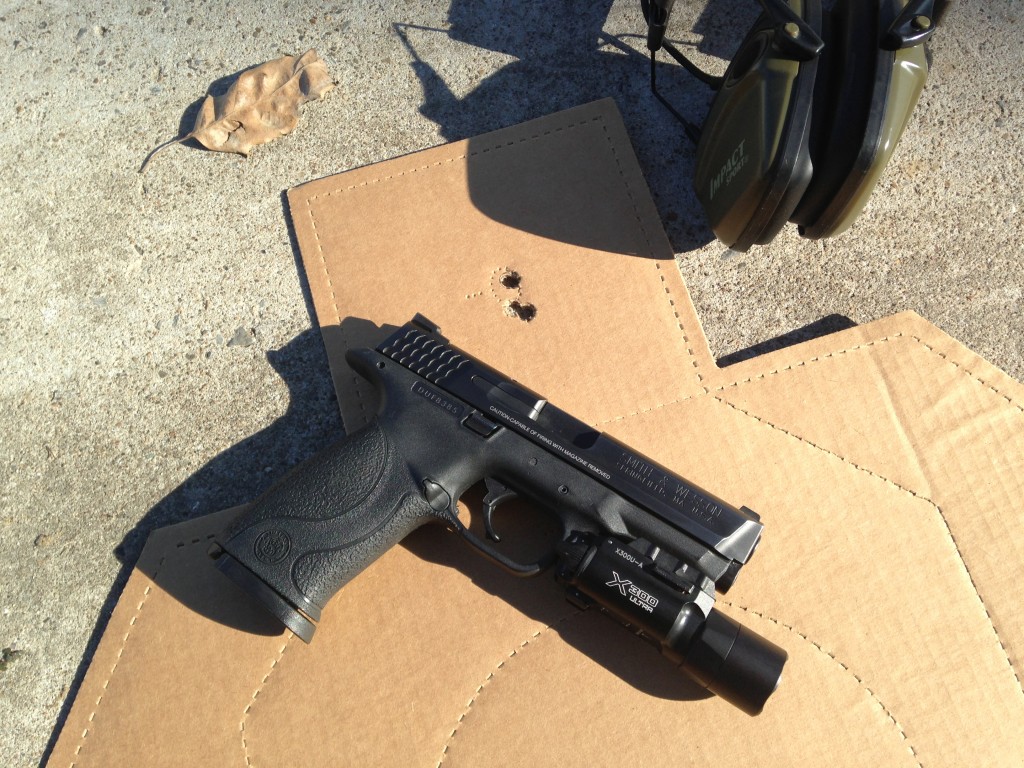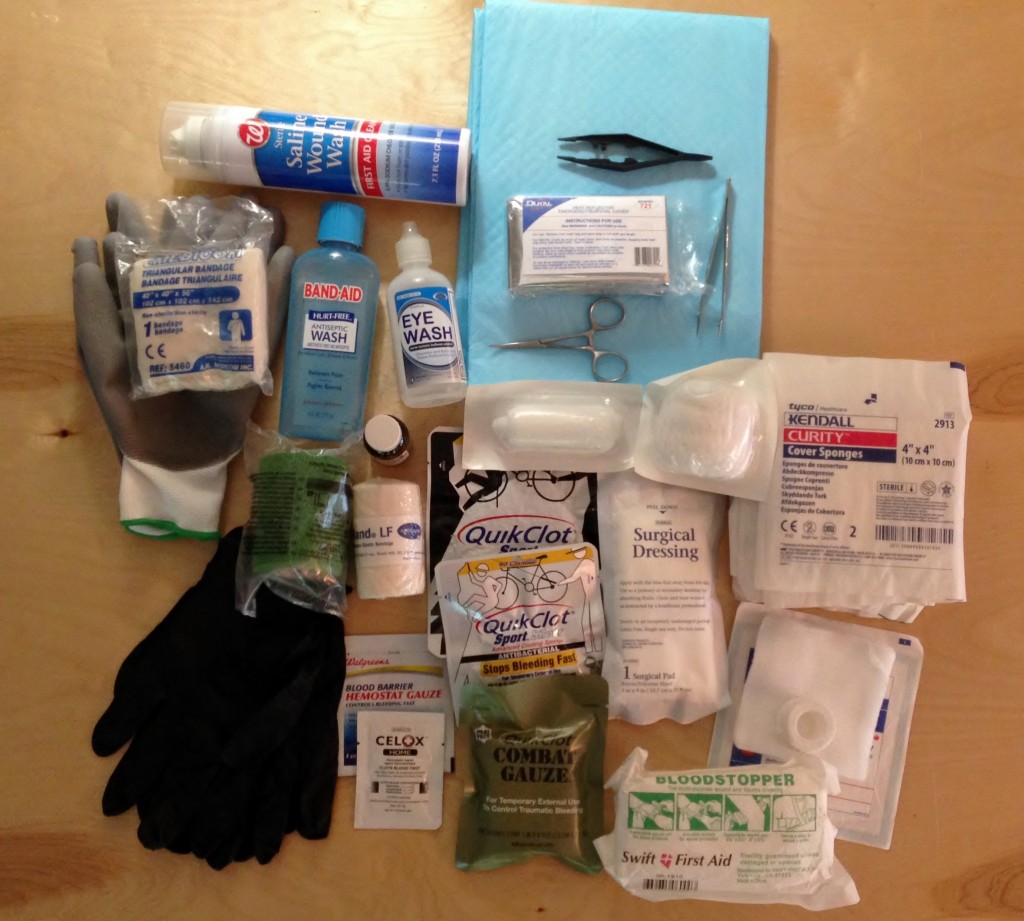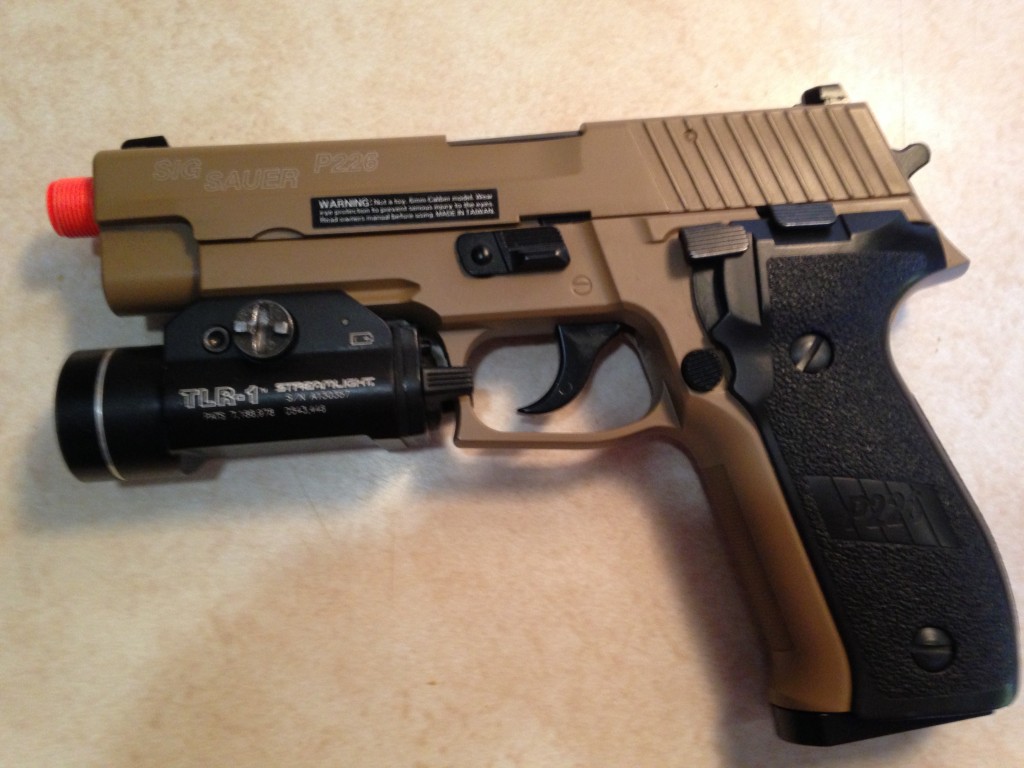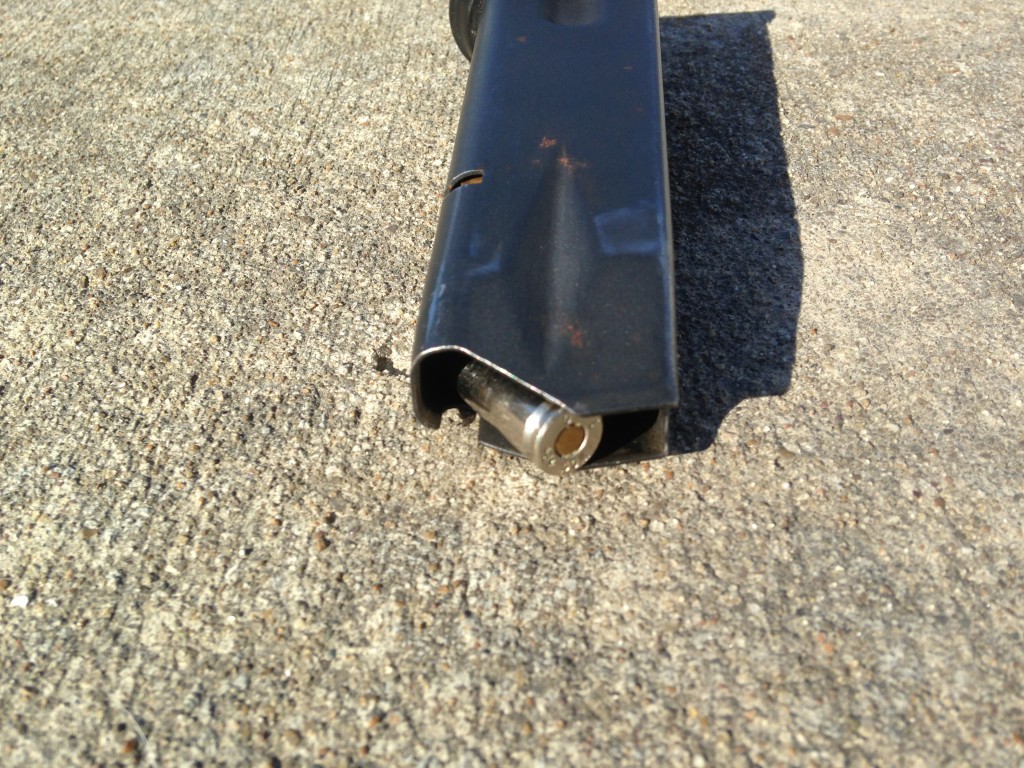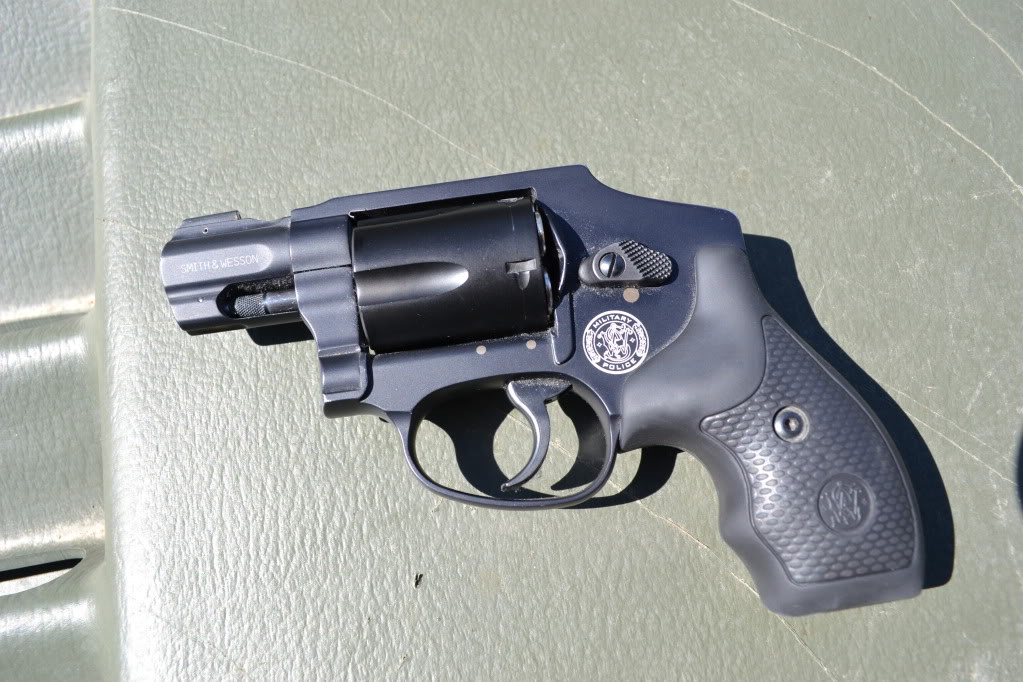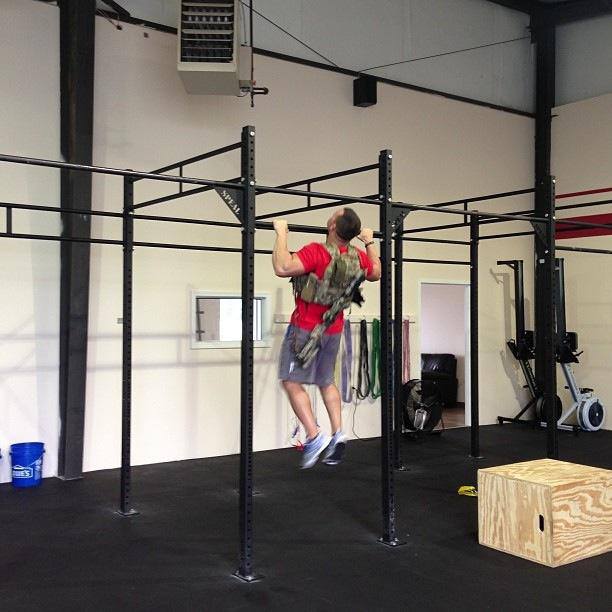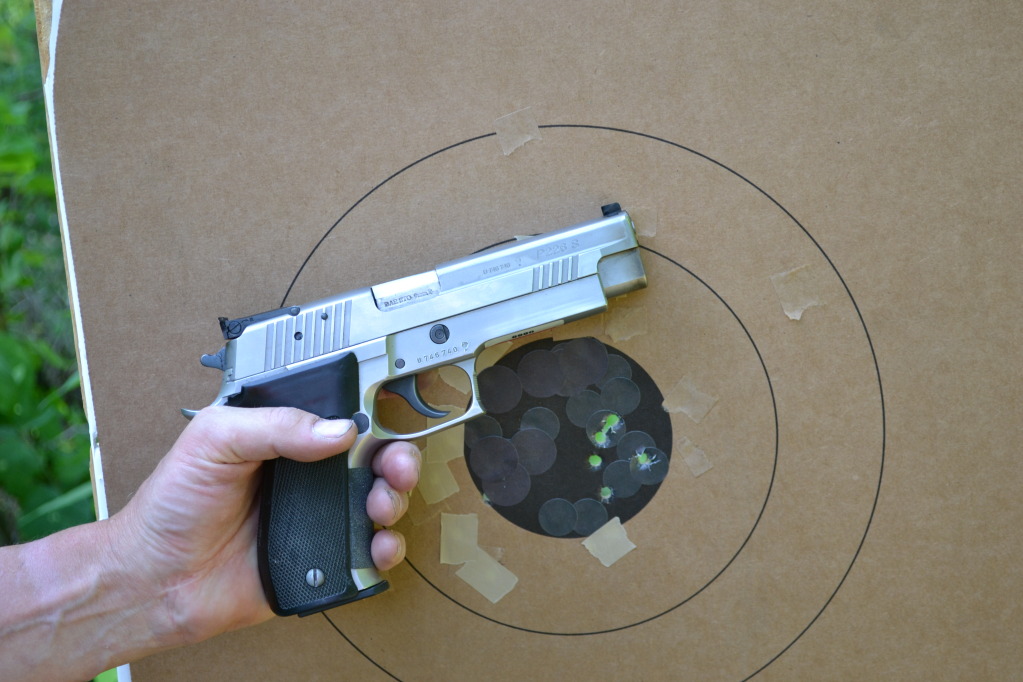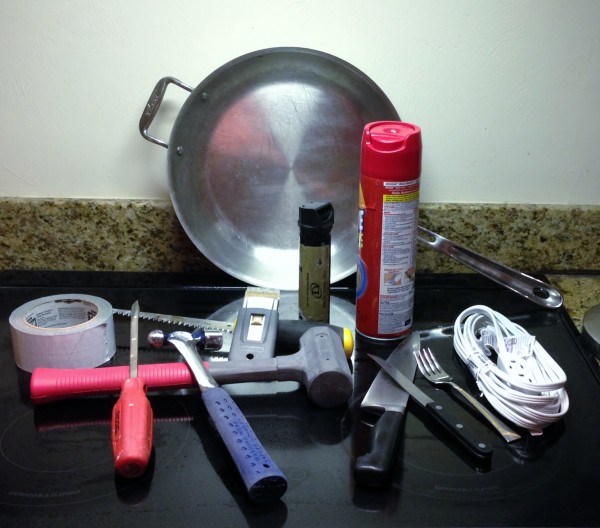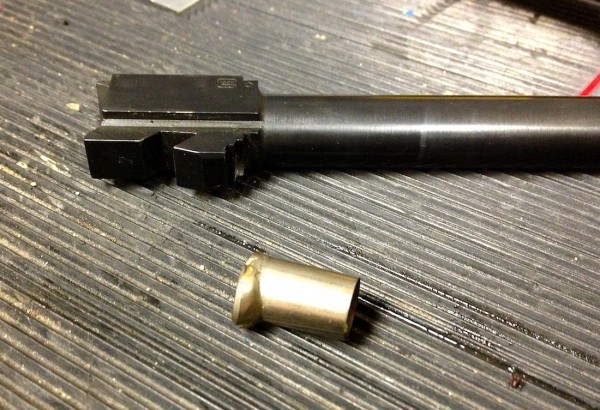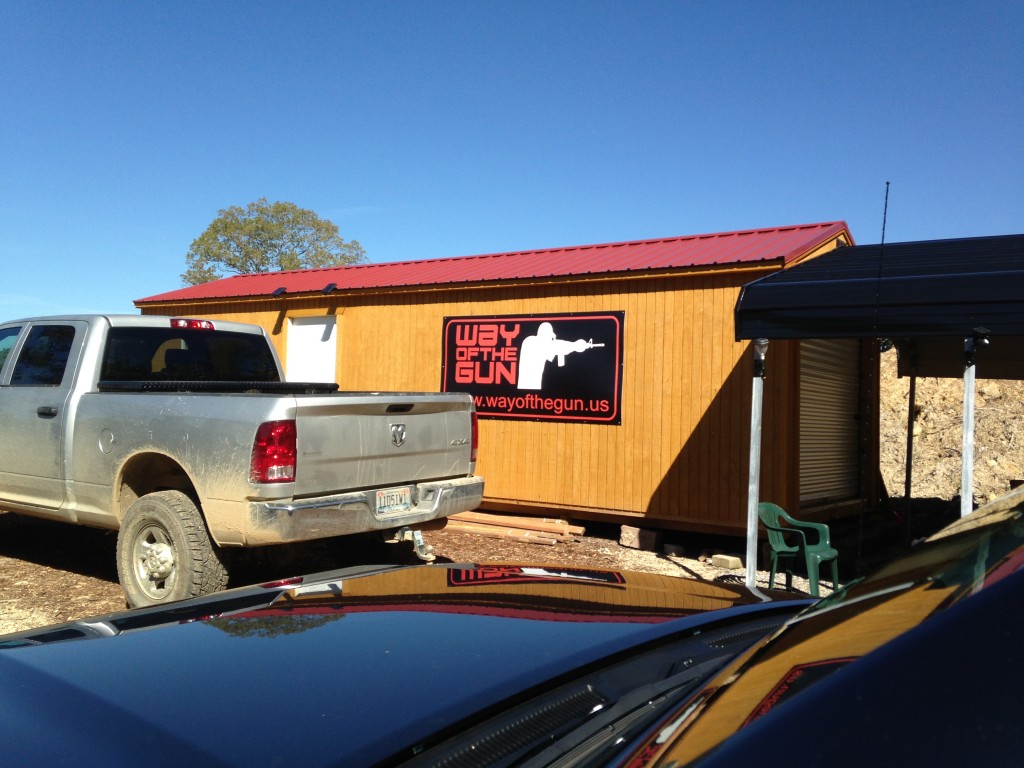One of the concepts I embraced many years ago was the idea that shooters aim into a larger area on any given target than what they need. Although, the phrase “Aim Small, Miss Small” is a bit cliche, it applies to high speed marksmanship. A shooter who accepts what many are taught in the academy of “Center the sights in the middle of Center Mass and you’ll do OK” are setting themselves up for nothing short of disaster when stress enters into the equation. When you accept a broad target area, it tends to also give the shooter a corona of inaccuracy that is emotionally comforting to them as Linus was about his blanket. Continue reading
Category Archives: Training
Tips for Successful Force on Force Training
 Force on Force is some of the most important training out there in my opinion. For those who carry a gun for defense or for work, it is the closest thing to the real thing going if done correctly. It also vets what we think will work in square range drills, against what happens against the living and breathing who shoot back. Continue reading
Force on Force is some of the most important training out there in my opinion. For those who carry a gun for defense or for work, it is the closest thing to the real thing going if done correctly. It also vets what we think will work in square range drills, against what happens against the living and breathing who shoot back. Continue reading
SHOOTING STEEL, DRAWING BLOOD
If you shoot nonreactive (fixed) steel targets regularly where frangible ammunition is not required (it rarely is) or the steel has been shot a great deal (it usually has), you likely have been hit by ricocheting bullet or jacket fragments. My experience suggests one is usually hit from the shots of others, and to a much lesser extent from reactive steel. (Ricochets also occur in indoor ranges when shooting paper targets, due to walls, floors, and metal objects downrange, or backstop integrity issues). Ricochets can be large, sharp, and travel at sufficient velocity to pierce skin and draw blood, sometimes even through a layer of clothing. A bullet or jacket fragment can become embedded in an open wound at skin level or deeper, and can cause most types of wounds; laceration, incision, avulsion, or puncture. A puncture wound (also referred to as penetrating trauma) is the type most likely to do damage beneath the skin and require professional medical attention even though superficial bleeding is stopped. I have seen each of those type wounds, and one likely arterial and two venous bleeds caused by fragment ricochets. Continue reading
Airsoft and Indoor Training
As this week’s weather pattern drops most of us into the single digits or below for daytime temps, it is easy to bypass training outdoors.
A good quality airsoft gun has a lot to offer as it comes to individual training. A couple of years ago, I bought a bunch of airsoft stuff for a project known as “MST” that Randy Lee and I have been working on for about 5 years. It has mainly found a home on a shelf in my closet until recently. I’ve started using it to grab 10-15 minutes here and there of basic dry fire style practice. I can do it in my garage. About all it requires is safety glasses and a cardboard box backstop. Continue reading
First Look- GrayGuns P-Series Internal Extractor
For many years, the internal extractors in later model SIG P-Series pistols have been somewhat problematic. The problems have been largely hit and miss, but were evident in some of the X5 pistols, as well as the P220 and others fielding the internal design. SIG eventually switched out to the short external extractor, and currently to a long external extractor.
My mentor, Bruce Gray at GrayGuns, INC has been working on the problem for several years and has finally come up with a “fix” for the reliability issues with the internal extractor guns. As can be observed in the video, the new extractor cleans up ejection and extraction, making it consistent and reliable. The process involves fitting the new extractor to the individual pistol and tuning it for reliability. The turn around time is about 10 days, and the cost for the modification is $200.
More information can be found at www.grayguns.com.
Photo of the Day: Dry Fire Training Setup
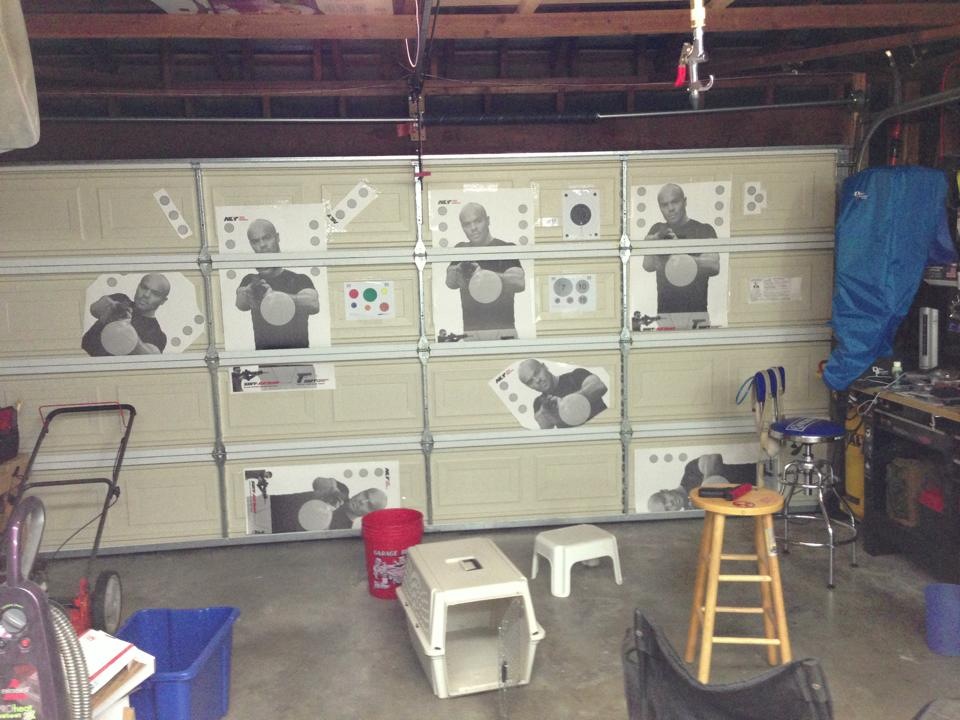 This photo was sent to us by one of our more dedicated students after he discovered Next Level Training’s SIRT pistol. Though optimized for the laser training pistol and rifle bolt, this can be used with virtually any dry practice setup. An A-frame ladder can be utilized for virtually any conventional or unconventional braced position. With this setup, your training is truly only limited by your imagination. Single target and target to target transitions are just the beginning. So stop making excuses and start off the year right with some solid training.
This photo was sent to us by one of our more dedicated students after he discovered Next Level Training’s SIRT pistol. Though optimized for the laser training pistol and rifle bolt, this can be used with virtually any dry practice setup. An A-frame ladder can be utilized for virtually any conventional or unconventional braced position. With this setup, your training is truly only limited by your imagination. Single target and target to target transitions are just the beginning. So stop making excuses and start off the year right with some solid training.
So, you just spent $600 on a class…..
Training Course Tuition- $600
Airfare- $550
Ammunition- $450
Customized SIG Sauer Pistol- $1800
Spending the entire class clearing malfunctions because you refused to buy new magazines springs- Priceless Continue reading
The Tactical Placekicker
You all know “that guy”. He is the Tactical Placekicker. He is the guy that expounds all kinds of tactical advice based upon the “average”. His entire being exists at “bad breath” distance with a bad guy inches away. He tells of the “average” gunfight being 1-3 rounds, 1-3 feet, and over in 1-3 seconds. He waxes poetic on all types of scenarios, and all of which fits neatly in the overhead bin of the J frame in his pocket. He often quotes “competition” can get you killed. He also knocks any training as “unnecessary” that is beyond bad breath distance, involves malfunction clearing, or multiple targets. He believes trigger control is overrated, and not really needed for the scenarios involving “Give me your wallet”!
He lurks out there. He can’t run. He can’t catch. He can’t block. He is the Tactical Placekicker.
“Murph”
The word “hero” is often overused, or misused in the American culture. It seems that the lame stream media tosses around the word “hero” anytime someone tosses a ball, scores a goal, or dominates social media.
The man in the above photo is a true American hero. For those of you who aren’t familiar with this man, more can be learned here http://www.navy.mil/moh/mpmurphy/. Continue reading
Crossfit and the Middle Aged Tactical Athlete
I’m not sure when that it happened. When I was in my 20’s, I thought people in their 30’s were “Middle Aged”. When I was in my 30’s, I thought people in their 40’s were “Middle Aged”. Now that I am in my mid-40’s, I’m not sure who to blame now. Continue reading
The Misunderstood Double Action Shot
Many years ago, Ernest Langdon wrote an article entitled “Fear Not, The Double Action Shot”. If memory serves me correctly, it was written shortly after he waxed all comers at the 2003 IDPA Nationals in the CDP category with a SIG P220. It was reading that article that started me down the road to where I am today. Continue reading
Pat McNamara’s Trifection
Though Mac doesn’t write for us, Hilton and I are big fans of his training philosophy of using timed performance metrics as well as competition to sharpen mechanical skills and stress management. If you haven’t had a chance to train with him, go check out the TMACS website and find a class. If he doesn’t offer one in your area, don’t be shy about traveling.
Mac’s latest drill involves moving to expose an occluded target, and of course, a timer to measure your performance. Rather than try and explain it, I’ll just say: check out the video here:
“CASTLE” DEFENSE: WHAT CAN–MAY–SHOULD–MUST YOU DO
Those who “sleep peaceably” in their bed must on occasion (and really short notice) rise to become “rough men ready to do violence” in defense of their castle. (Hat tip to George Orwell). Home invasion is perhaps the most frightening and dangerous of all violent crimes (it is committed out of public sight usually without fixed time/escape constraints and innocent occupants, often women and children, are rarely able to flee). It is becoming somewhat commonplace during daylight hours and at night in both urban and rural neighborhoods. Examples include two of the most horrific in memory, from Florida, (here) and (video here), one from Connecticut (here), one from Maine, an old one (here), and recent ones which ended in the death of a home invader (here) and (here), other recent ones, also very ugly, (here) and (here), and a routinely reported compilation of many in California (here). Finally, who can forget the single home invader who, for no apparent reason, brutally beat a New Jersey mother (video here) in front of her infant child? The spine chilling, heartbreaking details of these incidents provide good reality based scenarios for family drills training.
A home invasion commonly involves multiple malefactors who either didn’t anticipate the presence of occupant(s) when committing a residential burglary, or simply don’t care if the premises are occupied, because they have included in their criminal repertoire threatening deadly force or doing actual bodily harm, regardless of victim acquiescence. Home invaders often have violent criminal pasts, impersonate law enforcement, and carry weapons. Even if they enter unarmed, they easily find edged and impact weapons and other items (see above photo), which they can use to disable or restrain occupants or inflict lethal injury or great bodily harm. (Spoiler: Restraint of or forcing occupants into another room against their will likely constitutes an independent crime of false imprisonment, kidnapping, or other felony to which deadly force is ordinarily the indicated and lawful response).
My focus here is the MAY component of my deadly force paradigm (prior MSW post here), that is: Does the law permit the use of deadly force in defense of castle? Allow me to set up the MAY by first examining the use of defensive deadly force in a home invasion under the other components of my paradigm : CAN — SHOULD — MUST.
The CAN component should be easily answerable for those with basic home defense training and practiced shooting skill (close quarters pistol and making the “rescue” shot). It is your home, you are familiar with the layout, location of other occupants, areas of refuge, concealment and cover, and you have made preparation for a sudden, unlawful entry, including (when possible) emergency exfil of innocents. You know the location of defensive weapons (maybe you are wearing a handgun) and have planned for various scenarios. In addition, you have preselected ensconced positions of offensive and defensive superiority. You retain the element of surprise (because of CCTV, perimeter alarm with panel identifying breached sensor or zone, activated lights, motion detectors, or other device). Shooting will be likely be an engagement of less than 40 feet, with no uncertain intermediate barriers (you know which interior walls are wood, drywall, plaster, or concrete) or backstops. Innocents have been secured with you, or if not, they are hunkered in a known location. All of your defensive weapons, accessories, ammunition, untethered communication devices, and tactical and medical kit are on hand. Eye and ear protection may be deployed, time and planning permitting. If not here in your castle, where?
The SHOULD and MUST components are likewise easily analyzed, more so than in other self defense situations. The legally recognized sanctuary of your “castle” has been invaded. The presence of criminal-minded strangers who have made forceful entry often ends in great bodily harm or death, and such heinous crimes carry long prison sentences. Innocent lives (yours included) are clearly in extreme peril. Escape is often impossible or impractical, as an attempt to do so may put innocent life in increased danger. You have issued a verbal challenge or decided to do so would be tactically unsound, and have a target at gunpoint or are at your favorite ready position. The home invaders are now aware the castle is occupied and their presence is known, but have chosen not to make a hasty exit. If not now, when?
Here’s my take on the MAY, based on what I perceive to be a consensus of state laws applied to the scenario outlined above. Force, but not deadly force is allowed when necessary to eject a simple trespasser from real property. Deadly force is rarely permitted in the defense of real property. (Notable exceptions are to prevent the setting or hurling of incendiary/explosive devices). However, property crimes which include unlawful entry, that is, burglary, of occupied residential premises or home invasion robbery are not treated as mere property crimes. This is because they include unlawful use of force or threat of unlawful force against persons. In recognition of that, the law usually allows deadly force to be used to terminate the commission of such crimes without assessment of the victim’s belief or the imminence of the threat of death or great bodily harm.
When confronted with criminal threatening actors, deadly force is also usually permissible when a reasonable person would believe it to be necessary to protect against unlawful deadly force (force likely to cause death or great bodily harm) being used against an innocent. (State law may limit the defense of others defense to persons to whom one owes a duty of protection or to one who bears a certain blood relationship). It is my opinion that a home invader who refuses to promptly leave upon discovery, especially upon an invitation at gunpoint to do so, is an imminent lethal threat whether armed or not.
The is no duty to retreat within the premises of one’s “castle” nor to undertake an attempt to escape to the outdoors, before otherwise lawful deadly force may be employed. Contrary to widely-held belief, unless case law has imposed an offbeat requirement, neither a breach nor actual entry into the castle need occur to justify the use of deadly force. Nor is there a requirement the home invader be found inside the castle threshold to support a defense of justification or self defense.
Some states have adopted a so-called Stand Your Ground provision or expanded the “no retreat” castle rule beyond the defender’s permanent residence. The perimeters of the “castle” may include a fenced yard, carport, unattached or attached garage or other structure, lawn, patio, porch. Statute or case law may also expand the “castle” definition to include business/place of employment premises, a hotel/motel room, mobile home, or vehicle. Several are fashioned after Florida law, and may include Florida’s provision which supplies presumptions that a home invader who has made unlawful entry by force is presumed to intend an unlawful act of force or violence, and the defender’s fear of imminent peril of death or great bodily harm is reasonable.
A frequent question asked about castle defense is whether there is a duty to retreat and/or cease the use of force once the malefactor is downed/wounded or for some other reason no longer appears threatening. Many believe that is the prudent course of action regardless of what the law allows. State statute or case law on use of force may supply the legal answer if there is a reasonableness or actual necessity requirement on the use of force. (This would be analogous to the constitutional prohibition of “excessive force” by LEO’s). A consideration which muddies the issue is whether the castle defender has the ability to take and hold one or more potentially non-compliant criminals at gunpoint. (A very dangerous undertaking for a single armed defender). An Oklahoma case involving a pharmacy robbery comes to mind on this issue (here). The defensive use of deadly force (which resulted in conviction of the defender) was videotaped (here).
Do check your state’s statutes on use of deadly force with focus on locations where retreat is not required and whether the law provides presumptions in favor of a defender. Also see how the law is explained to juries in your state’s pattern criminal jury instructions when self defense or justification for defensive use of deadly force is asserted. One internet place to find links to state self defense laws (in force and pending legislation) is here. If you wish to purchase a book devoted to the law of self defense, consider attorney Andrew Branca’s widely-respected work (here).
“It’s an ugly world out there” is a common saying. Sometimes ugly comes inside. If it does, you will not have to divert from the warrior mindset and sound defensive tactics. Thankfully, the law is on your side if you are forced to employ deadly force to defend your castle.
Reloaded Ammunition Concerns
It should not be a surprise to anyone that it is difficult to get consistent supplies of ammunition these days. Unfortunately, that means that the quality of what is being fed into our guns might be a bit (lot) lower than it has been for a while.
It has been several years since I’ve worked on a pistol that suffered a ka-boom. Last month, a personally owned Gen 3 Glock 22 came across my bench at work after one of those events. The owner had been firing frangible rounds from a commercial reloader. I ended up having to replace the internals in the slide. Continue reading
Training with Frank Proctor
I had the distinct pleasure of traveling to the Way Of The Gun training facility recently to train with Frank Proctor. Frank operates his facility out of Eastaboga, Alabama, which is near Talladega, Alabama for those of you that follow racing. Frank’s facility is still pretty spartan, as it appears that construction and additions are a daily event. But, the layout is pretty ingenious as he offers a training area and a public range area to the local community. Frank is going to have a world class training facility. Continue reading



